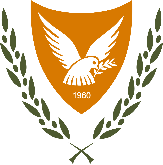Ανασκαφικές μαρτυρίες για την Υστερο-Κλασική και Ελληνιστική Περίοδο στο Κούριο / Δήμος Χρίστου.
Τύπος υλικού: ΆρθροΓλώσσα: greeng, Αγγλικά Λεπτομέρειες δημοσίευσης: Λευκωσία: Τμήμα Αρχαιοτήτων, 2007. Περιγραφή: σ. 65-80 : εικ., φωτ. ; 28 εκΆλλος τίτλος:
ΆρθροΓλώσσα: greeng, Αγγλικά Λεπτομέρειες δημοσίευσης: Λευκωσία: Τμήμα Αρχαιοτήτων, 2007. Περιγραφή: σ. 65-80 : εικ., φωτ. ; 28 εκΆλλος τίτλος: - Archaeological evidence for the Cypro-classical and Hellenistic period at Kourion
- 939.37
Περιέχει περίληψη στην Αγγλική γλώσσα.
Περιέχει βιβλιογραφικές παραπομπές.
The discoveries of the annual excavations of the Cyprus Department of Antiquities, which started in 1975 and were completed in 1995, include the remains of certain public buildings and private houses, various water works and a large variety of movable finds dating to the late Classical and Hellenistic period. The earliest of them are concentrated in the northwest sector of the site and comprise the lower part of the east corner of an ashlar pyramidal construction of a glacis, a series of similar stone built structures, adjacent to the nearby defensive wall of the town and identified as a bastion, and a rectangular cistern near the middle of the southeast wall of the glacis. Sufficient ceramic evidence mostly of black and red glazed bowls and dishes from the foundations of the walls and the fill of the cistern in connection with the irregular isodomic system of their construction, that resembles the construction system of the contemporary Classical building at Palaepaphos - Evreti and one of the defensive walls of Telos, Andros, Philippi and Antisara in Greece, indicates that those impressive buildings are dated from the middle of the end of the 4th centure B.C. A second irregularly square cistern of the late Cypro-Classical period and the femains of a large public building, a large slightly rectangular cistern and various other ovoid or rectangular and square cisterns, dating from the very beginning to the end of the Hellenistic period, were uncovered in the central sector of the site. The numerous movable finds yielded from the floors and walls of the uncoverd buildings and the fill of the cisterns, except of the pottery mentioned above, consist of bronze coins, marble and limestone inscriptions, metal objects and various other household utensils. All these new discoveries constitute the first well stratified and confirm literary sources regarding the continuation of the cultural sequence of this famous town from the middle of the 4th to the middle of the 1st century B.C.
Δεν υπάρχουν σχόλια για αυτό τον τίτλο.
